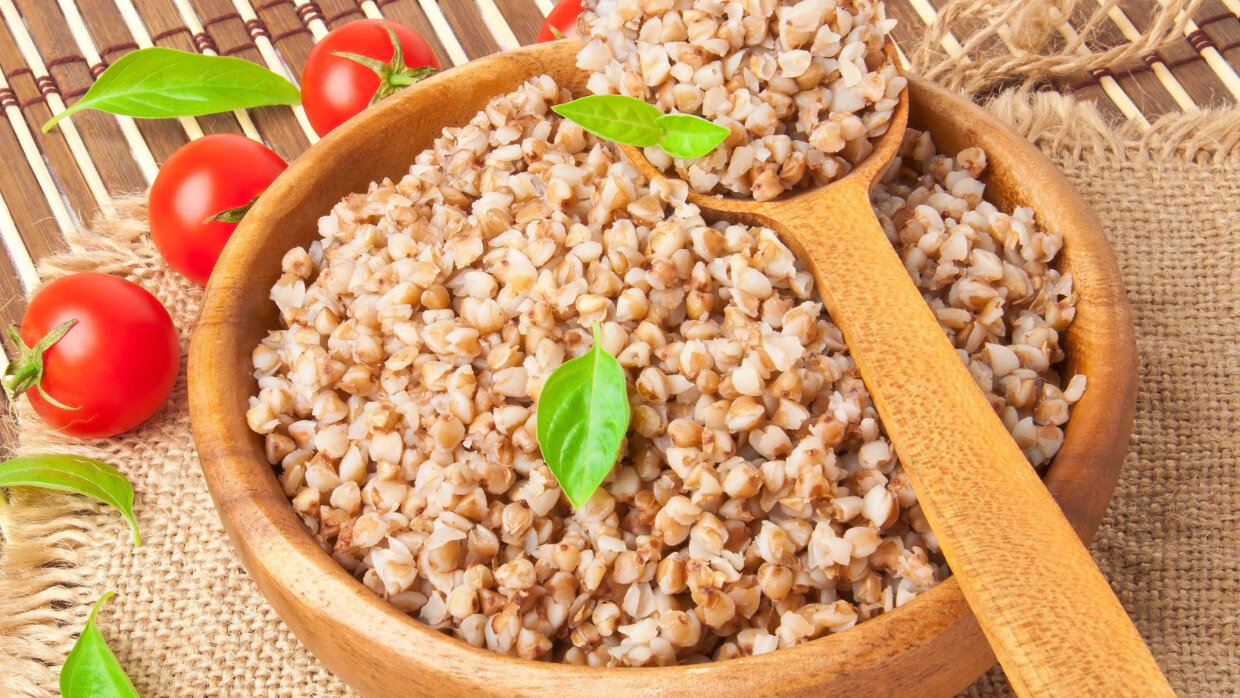My great-grandma would serve kasha varnishkes on holidays and shabbat evenings and yet mom wasn’t sure what kasha was. When I asked her, she replied, “Maybe, some kind of wheat or barley. It’s kasha, and I looked forward to eating it. It’s really good.”
It turns out most people don’t know what it is. Roasted buckwheat, known as kasha, is a berry often confused with wheat. It has an almost nut-like taste. “Buckwheat is poorly named and confusing,” says Kile Gifford, President of Birkett Mills which manufactures Wolff’s kosher kasha.
It’s appeared in Ashkenazi Jewish cuisine since the 19th century in dishes such as cholent, knish stuffing, and classic kasha varnishkes. It’s even used in cake! Yet, it’s most often served around the holidays, “40 percent of our kasha sales are for Rosh Hashanah,” says Gifford.

Buckwheat is planted in June and harvested in September and October. The previous year’s crop is roasted for the high holy days because of the time frame. It’s harvested from white flowers that produce the black seeds.
Health Benefits
Nutritionally, it’s similar to quinoa, another berry that’s often a wheat substitute.
It is gluten-free, but only if it is not milled on the same equipment as wheat products. “The standard for gluten-free food is no more than 10 parts per million,” says Gifford. “Wolff’s is tested at half the standard at 20 parts million.” In order to accomplish this feat, they keep it away from grains so wheat dust doesn’t affect it.
If you have any kind of gluten sensitivity, contact the customer service email for the manufacturer of the kasha you purchase to insure they don’t use the same mill for wheat products.
While it may not appear as a health food when stuffed in a knish or covered in brown gravy and onions in kasha varnishkes, kasha is among the foods that could be eaten daily as part of a healthy diet.
As far as specific macro and micronutrients, it’s high in healthy carbs, fiber, potassium, phosphorus, iron, and magnesium based on standards set by the National Academies Press. It’s also only 150 calories per serving.
Kasha is purely made from buckwheat, so it is considered minimally processed simply due to the roasting.
Cooking Tips
If making kasha varnishkes, pair kasha with whole wheat farfalle, bowtie pasta to keep the dish on the healthier side.
To avoid soggy kasha, Gifford offers his pointers. “Don’t add kasha to water until there’s a rolling boil,” he says. If the water isn’t hot enough, kasha can get mushy. Boil kasha for 10-12 minutes with a tight lid that you place on the pot swiftly after adding kasha to water, he says.
To reduce the margin of error further, Gifford recommends scrambling a raw egg with a fork and then mixing the egg with kasha. The egg coats kasha and protects it from becoming mushy instead of fluffy.
Another trick is to toast kasha in a pan for two to three minutes to prepare it for boiling. For added flavor, boil kasha in chicken broth or add garlic or herbs to the broth. If you sauté half a cup each of onion and mushrooms before adding broth for cooking 1 cup of dry kasha, you’ll end up with a tasty kasha pilaf.
You can also snack on kasha straight from the box. Because kasha starts off roasted, it’s added to Kind snack bars for its nutty, crunchy texture. For a balanced breakfast, add kasha to Greek yogurt and berries.
While my mom remembered my great grandma’s kasha varnishkes for over 60 years, now she knows what kasha actually is.
More Jewish recipes for Kasha



















